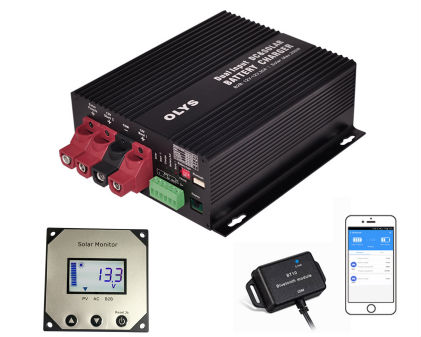Battery-To-Battery chargers (also commonlyknow as DC-DC chargers) allow you to charge an auxiliary / leisure battery fromyour alternator whilst driving. They are installed in-line between the positiveterminals of two batteries (one of which is connected to an alternator,typically a starter battery) and offer several benefits when compared withtraditional split charge systems that utilise a Voltage Sensitive Relay (VSR)or heavy-duty, alternator-triggered relay.
1.Direct alternator charging used in a traditional splitcharge system with a VSR will only achieve around an 80% charge state. VSRssimply allow charge to pass directly from the alternator to the auxiliarybattery whereas Battery-To-Battery chargers take the alternator output andboost or reduce it to provide a stable voltage output according to amulti-stage charging profile. This provides a 100% re-charge for your leisurebattery in a controlled way and typically achieves it faster than with directalternator charging.
2.Current flow is limited by the charger's currentrating, eliminating potentially damaging high in-rush currents and oftenallowing the use of smaller connecting cable than with VSR-based split chargesystems.
3.Using a battery-to-battery charger is the only reliablesolution if you intend to re-charge a second battery in a modern vehicle thathas an ECU-controlled 'smart' alternator (generally Euro 5/6 compliant enginesonward). These have a highly variable voltage output that is often too low to providea charge or (in the case of regenerative braking systems) so high that it candamage some battery types. Due to this highly variable voltage VSRs are not suitable for use with 'smart'alternators.
4.Battery-to-battery chargers are simple toinstall and will engage/disengage automatically on engine start/stop, ensuringthe batteries are isolated and cannot discharge one another.
